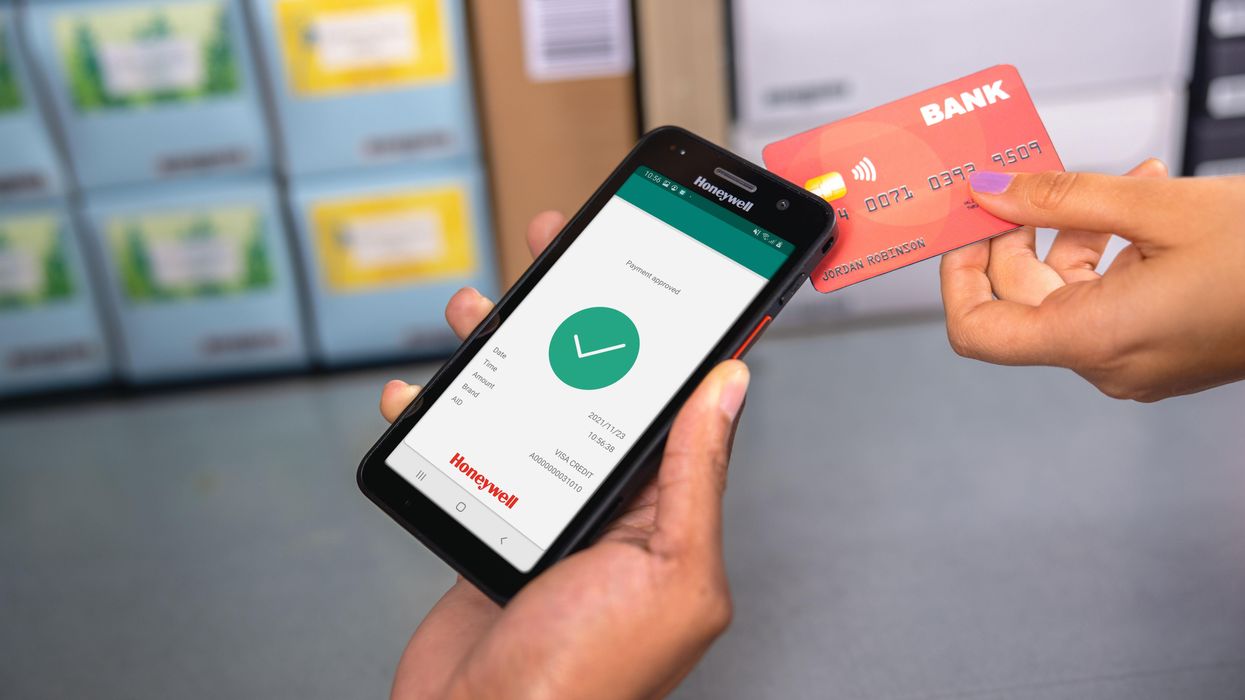Through its work in retail, teams from the technology company Honeywell visit with many leaders and associates in stores over the course of a year.
In recent years, Global Retail Marketing Principal Tony Boncore said that a common theme emerged: “How do we reduce friction between the shopper and the associate, or the shopper and the experience?”
There are three distinct drivers of retail in that question: The customer who is browsing and buying an item, the associate answering questions and providing service, and the experience guiding customers through the store.
Devices from Honeywell are designed to help to bring all of these together. At this month’s NRF Big Show, The Current visited Honeywell’s booth to see the technology in action. Branded with Tractor Supply, the booth offered a look at devices that are reshaping the shopping experience around people, and helping associates more seamlessly serve customers throughout the store.
Here’s a look at several devices and use cases:
Mobility throughout the store
In listening to customers, Honeywell received feedback that associates want to use technology that had the look and feel of a mobile device. That’s exactly how the CT 30 XP is designed. The device is also ruggedized.
This technology is at once familiar and innovative. Associates want to use the type of device that they are accustomed to in everyday life, and the mobile format fits that mold.
It also opens up new use cases. A shopper may have completed checkout, but forgot an item. With the device, an associate can scan an item and complete checkout – whether it’s an in-store or purchase or online transaction for pickup.
The devices also have fluctuating scanning capabilities that allow associates to scan items that are overhead or on the ground from a standard standing position, without the need for a ladder or crouch.
In the end, the devices are designed to make tasks easier for associates to complete, and free them up to be available to customers.
Contactless checkout
With mobile wallets, Buy Now Pay Later and more, there are a growing number of payment options available to shoppers. Retailers are looking for ways to continuously add new forms , while doing so within one checkout system.
Honeywell’s Smart Pay software is designed to enable this to happen. The software enables a transaction from a store device with anything that’s enabled with the communication protocol NFC. This could be a mobile device with a wallet installed, or a credit card.
As it continues to improve software, Honeywell is aiming to evolve with the payments industry. Credit card companies are increasingly phasing out magstripes altogether as chips gain popularity. Soon, chip-only and contactless payments will be the dominant modes. Honeywell’s software enables them to be accepted on a single device.
When combining Smart Pay and the mobile device for associates, there are other advantages, too. There’s no longer a requirement to have 10 checkout registers at the front of the store. Rather, associates can be appointed to a device, and move throughout the store. This changes the experience for customers, who can meet associates when they are nearby, as well.
These devices also enable more flexible fulfillment options for certain sizes or styles of items that might be from an online assortment, such as ship-from-store, or pickup from another store.
Talk amongst associates
Honeywell is also aiming to reduce friction when it comes to work between associates. Through an integration with Microsoft Teams, Honeywell developed the Push to Talk app. This creates a walkie-talkie-like functionality for in-store devices.
Associates can ask each other about the availability of items within a store, or speak to a counterpart at another store.
Overall, Honeywell’s devices are equipped so that associates can serve customers to meet their specific needs wherever they are.
“It’s a tool I have just in time,” Boncore said. “You never know when that time is going to be, but when it is, I am equipped and prepared.”
In developing new technology, a key to Honeywell’s approach is a mindset of seeing associates not as mediators, but as end users.
“The team members are also customers,” Boncore said. The key is to listen to them, and build with serving what they want as the end goal.
Then, they have all they need to delight customers.












